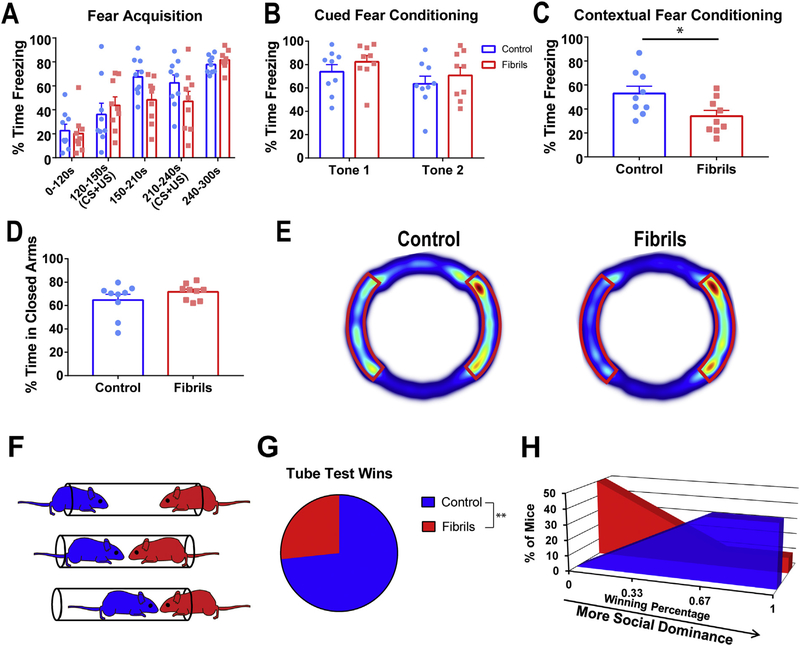Fig. 4.
Fibril-injected mice have deficits in fear memory and social dominance. All tests were performed 6 months after control (PBS, cohort 1, A, B,C,D, E; monomer cohort 2 F,G,E) or fibril injections. A) Fibril-injected and control mice showed no difference in fear acquisition (repeated measures ANOVA: p = .4266, F (1,16) = 0.6656) or in B) cued fear conditioning (repeated measures ANOVA: p = .2871; F(1,16) = 1.213). For contextual fear conditioning, control mice froze an average of 53% and fibril-injected mice froze an average of 34% (unpaired t-test: p = .0281; t = 2.414; df = 16). D) Mice showed no significant difference in time spent in closed arms of the elevated zero maze (unpaired t-test: p = .4117; t = 0.8429; df = 16). E) Average heat maps from the elevated zero maze. Closed arms are outlined in red. F) Schematic of tube test for social dominance. Mice underwent three rounds of testing against same-sex mice from the opposite treatment group. G) Compared to control mice, fibril-injected mice exhibited a losing phenotype (binomial test: p = .0081) and H) the majority of fibril-injected animals won less than one round. N = 9 for all groups. *p < .05, **p < .01. (For interpretation of the references to colour in this figure legend, the reader is referred to the web version this article.)

